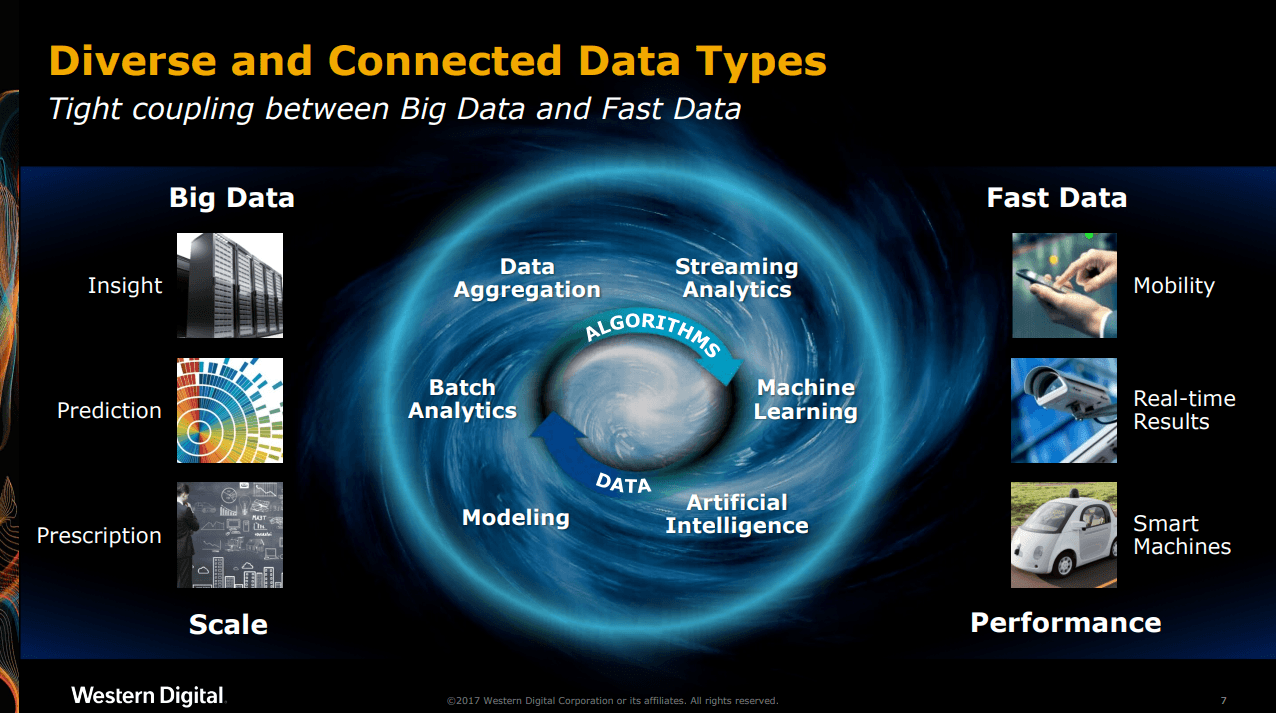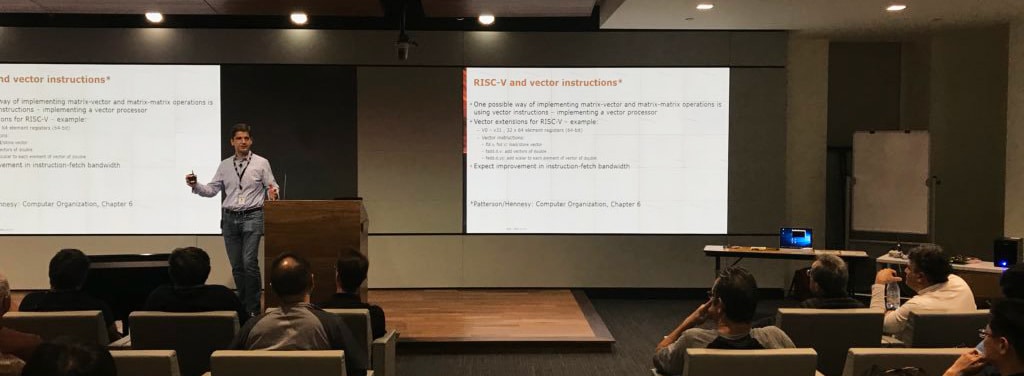Why Open Innovation is the Bedrock for the Future of Processing
Innovation is the lifeblood of most companies, and at its heart is data. But what is required to drive innovation and what are the environments needed for data to thrive and generate value?
The technology sector is full of stories about companies that start in a garage, or a special projects group where people and ideas are developed free of constraints from the existing status quo. Does this entrepreneurial spirit extend to data? Are there constraints that limit new ideas from being realized? We believe that the answer to both of these questions is yes.
The Role of Data is Evolving
The role of data is evolving. For example, we are witnessing a boom in machine learning and artificial intelligence, where data is used to train the neural network for a specific application. Once the weights for the networks have been established, they are applied to an application that must respond quickly. One common example is autonomous driving.
While many people have heard about the future of the automotive industry, the same processes are being applied to many different use cases throughout the technology industry.
Freeing Data and Processing Models
Data needs to be processed in order to realize its true benefits. A key constraint is today’s microprocessors.
The design of a microprocessor starts with the Instruction Set Architecture (ISA), the list of instructions that ultimately will be run on the silicon. The ISA is used to define the microarchitecture (logic, registers, memory, etc.), which in turn defines the layout of the silicon chip.
General purpose microprocessors have been the norm for the past 30 years and have dominated the server and mobile markets.
A general purpose processor is fine for most servers and mobile phones, but isn’t optimized for the specific requirements created by the rise of Big Data and Fast Data applications. A big data application such as analytics has a very different processing profile that can handle large amounts of data versus a Fast Data application such as autonomous car controls, which requires time-critical processing for smaller amounts of data.
Today’s data environments are ripe for innovation, and as Martin Fink reinforced last November, we believe that the time has come for an open innovation model for processors, where they are optimized for a specific use case.
The RISC-V Foundation was created in 2015 to govern the RISC-V ISA that was developed at UC Berkeley. Open and royalty-free, the ISA is modular with a standard base and standard extensions. The foundation also works with member companies to generate new extensions of the ISA for example vector instructions that enable a vector operation to be completed in one clock cycle. Vector instructions are useful for customizing for applications like artificial intelligence and machine learning where many of the operations the processors perform are based on a vector. The foundation also allows licensee companies to generate their own instructions to supplement the base and extensions. By contrast, other ISAs available today are tightly controlled.
Open Source Philosophy and the Freedom to Innovate
The RISC-V Foundation is building on the open source software movement, where collaboration happens within teams of any size, often between two or more teams, and often utilizing contributors’ diverse experience, knowledge and skills. By encouraging collaboration and allowing more people to implement solutions and pursue alternative approaches, open development often spurs innovation.
RISC-V developers believe that innovation and optimization around hardware is the next logical place to push open standards, inspired in part by the opportunities created via the open source software movement.
The software and ecosystem work needed to support RISC-V is moving forward while taking advantage of open source philosophy in order to grow faster than previous ISAs. RISC-V has also learned from past experience and has embraced specialization while maintaining a modular ISA base that will not change, allowing the software community to come together regarding the basic software stack while leaving the door open to innovative solutions. The result of these efforts is the creation of an environment encouraging innovation around data and where new approaches can be developed in the entrepreneurial spirit of the industry. The open RISC-V ISA gives everyone the same chance to create a successful enterprise to generate value out of data.
Building on a Strong Foundation
The RISC-V Foundation is working to disrupt the microprocessor market in a similar fashion to the disruption caused by the Linux Foundation®. The success of Linux® has proven that an open model governed by a strong foundation can compete and be successful in the software world. Now is the time to apply that model to ISAs.
To be crystal clear, the RISC-V ISA is not a processor chip design, and any company using this ISA must still develop the microarchitecture and silicon to produce the chip. The ecosystem needed to support the process of implementing RISC-V is growing and there are RISC-V chips available.
With innovation at the heart of what we do, we see RISC-V as a path to innovate with greater freedom. Western Digital is currently developing our first RISC-V processor core, which will be used in an embedded application for a memory controller, and we are committed to converting our processor cores to RISC-V.
Let the innovation begin!
Forward-Looking Statements
Certain blog and other posts on this website may contain forward-looking statements, including statements relating to expectations for our product designs, technologies, capabilities, product applications, and industry adoption. These forward-looking statements are subject to risks and uncertainties that could cause actual results to differ materially from those expressed in the forward-looking statements, including development challenges or delays, supply chain and logistics issues, changes in markets, demand, global economic conditions and other risks and uncertainties listed in Western Digital Corporation’s most recent quarterly and annual reports filed with the Securities and Exchange Commission, to which your attention is directed. Readers are cautioned not to place undue reliance on these forward-looking statements and we undertake no obligation to update these forward-looking statements to reflect subsequent events or circumstances.






